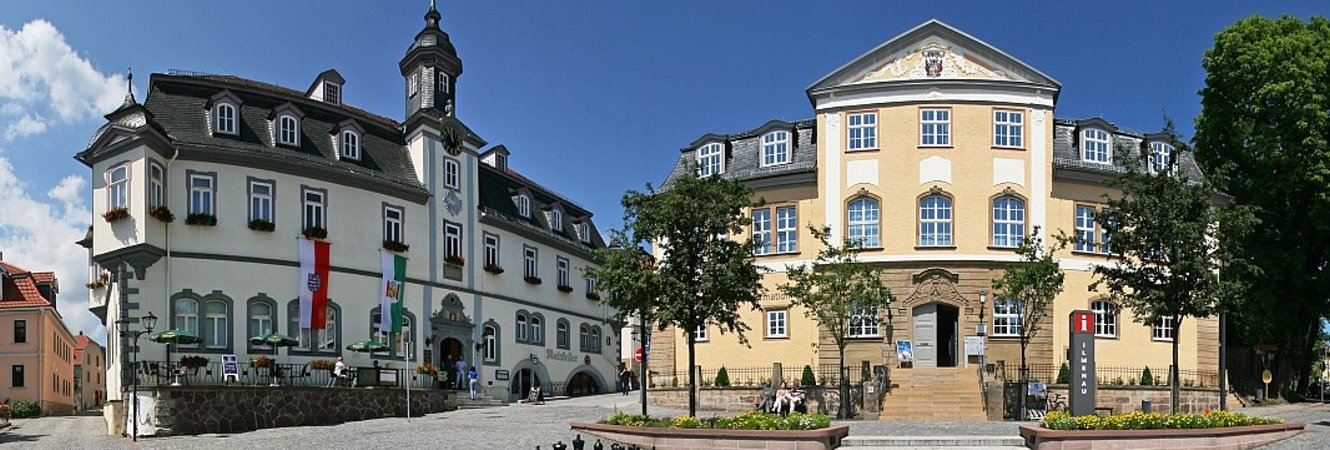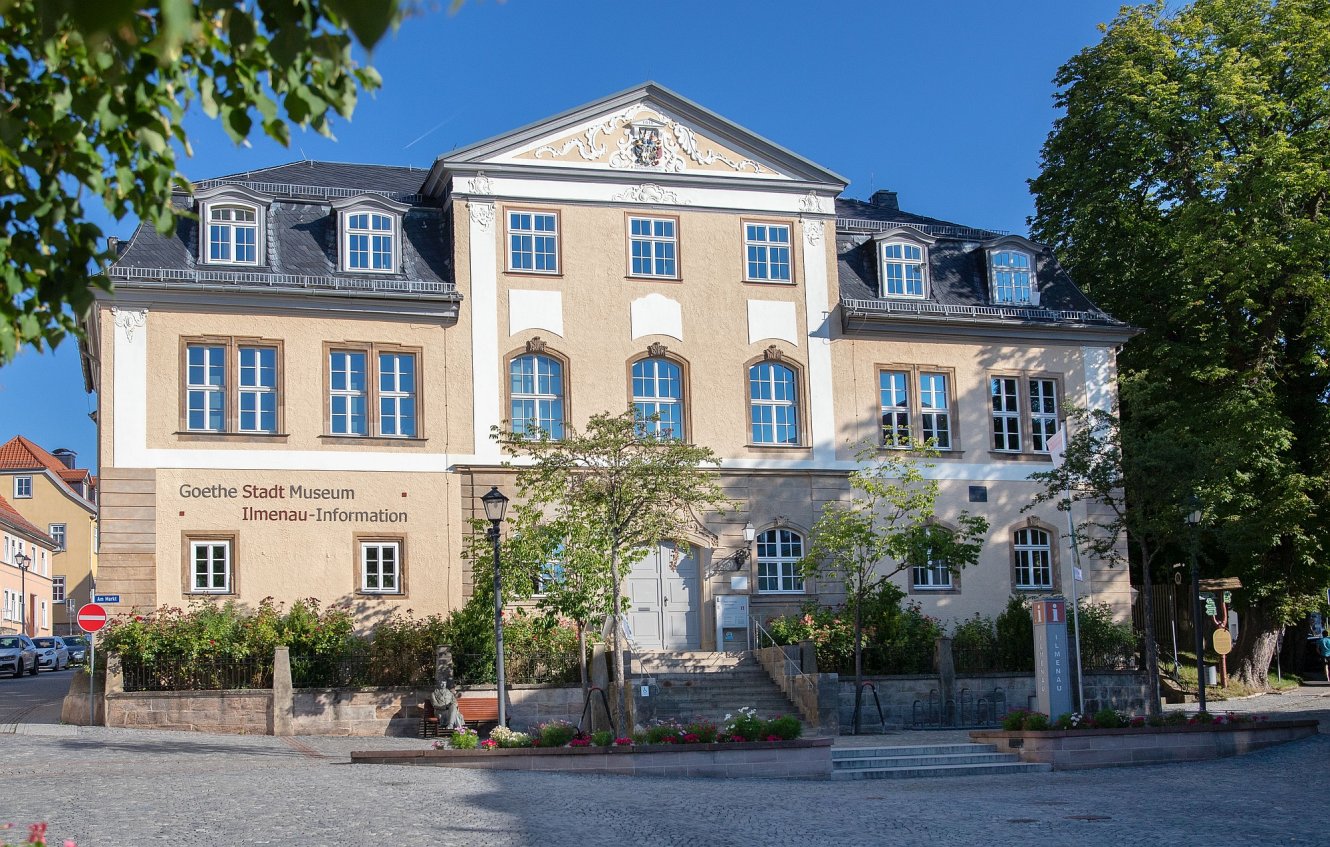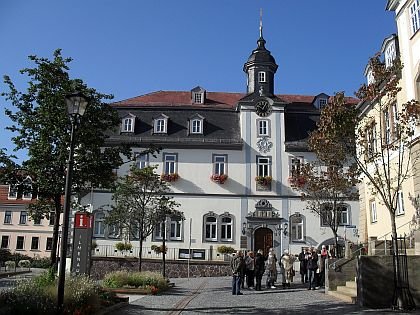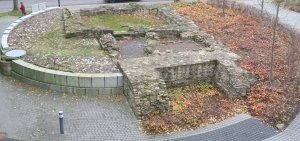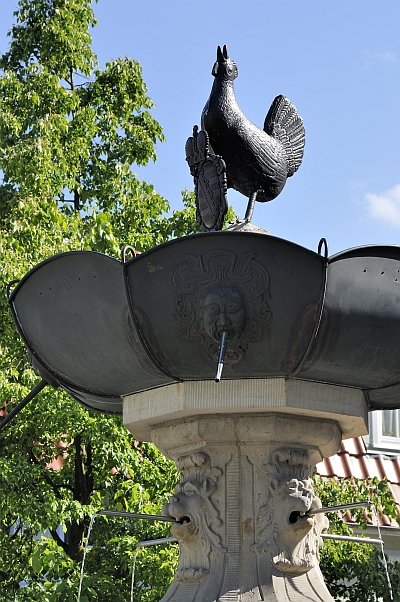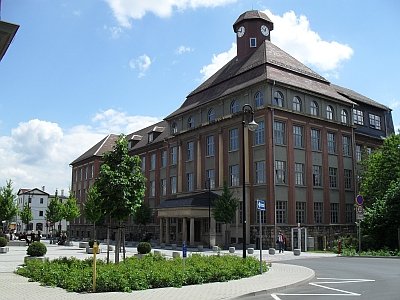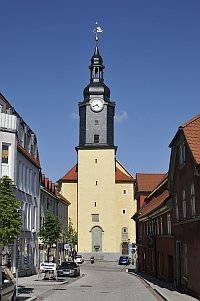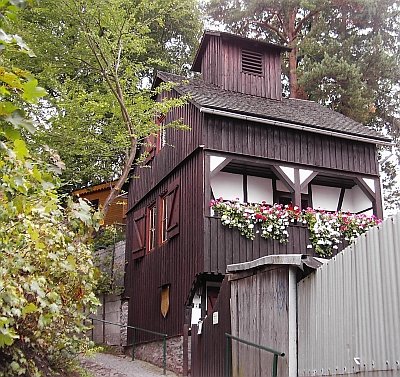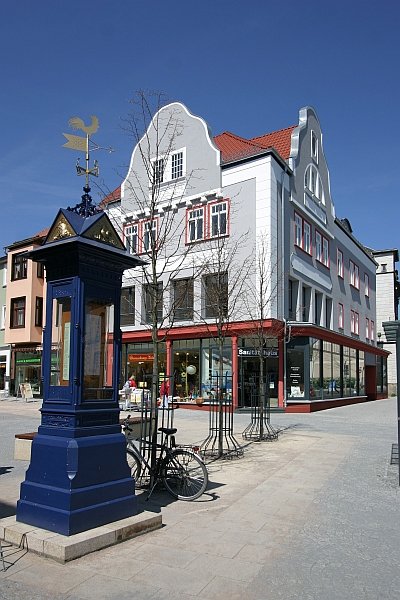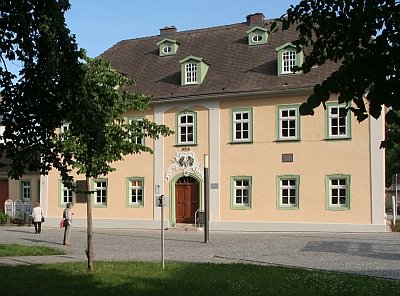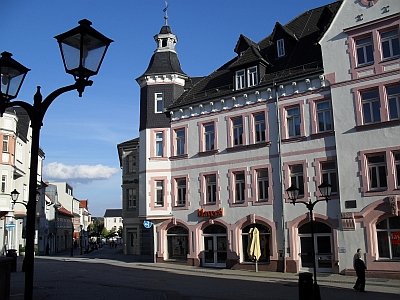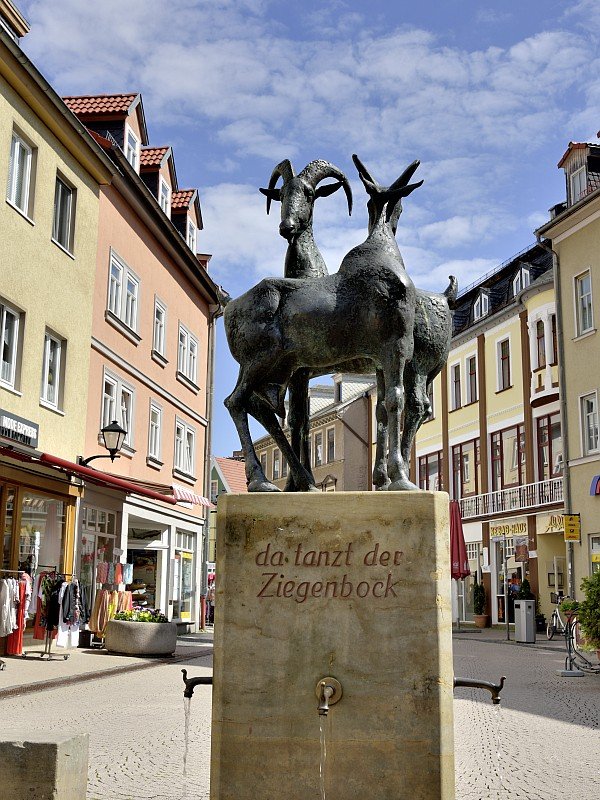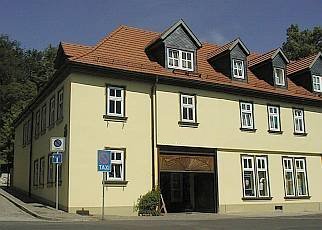City tour
Amtshaus (Courthouse)
The Amtshaus was built by the Dowager Countess Sophie von Henneberg as her home on widowhood. It was burnt in 1752 but soon reconstructed, so that from 1756 there were courtrooms for the local justice on the ground floor and living accommodation for members of the ducal family above. When Goethe came to Ilmenau on their behalf he used to stay in the room at the south-east corner.
Today, the Amtshaus is home to the Ilmenau Tourist Information Office and the GoetheStadtMuseum. Here Goethe the poet, the public servant and the natural scientist is presented.
Rathaus (Town Hall)
The Renaissance portico and carved dates are a record of the vicissitudes of fortune seen by this building, so often reconstructed after fire. Besides the main doorway, the structs below the oriel window, bearing the date 1625, have been preserved since before the great fire of 1752. Above the lintel of the doorway there are dates to remind the townspeople of the devasting fires of 1603, 1624 and 1752.
The Wasserburg
The excavated ruins of this second Ilmenau castle are near the court building. Finds from the excavations are exhibited in the hallway of the Finanzamt (tax office) very close by.
Hennebrunnen (The Hennebrunnen Fountain)
This charming fountain has graced the market square since 1752 or thereabouts. The hen which represents the counts of Henneberg (the name could mean "Hen-Mountain") raises its beak. The hen's claws grasp a shield with the arms of Sachsen.
Altes und Neues Technikum (part of the university)
The Thüringische Technikum was formally opened in 1894. Both the "old" and the "new" buildings are today part of Ilmenau's Technical University.
St. Jakobus Kirche (Parish Church)
The Jakobuskirche was rebuilt in 1760/61 in the late Baroque style. The organ was built by Walcker's of Ludwigsburg in 1911. It is the largest of its kind in Thüringen
The only relics of the original 12th and 13th century Romanesque buildings are the foundations visible in the nave. The long structure in the late Gothic style wih its supporting pillars and polygonal Choir is believed to date from the end of 15th century. The church, especially any woodwork, was not spared a series of fires that swept through the town. After the greatest , in 1752, only the exterior walls remained. The Jakobuskirche was rebuilt in 1760/61 in the late Baroque style with August Friedrich Straßburger as chief architect. The organ was built by Walcker's of Ludwigsburg in 1911. It is the largest of its kind in Thüringen and has been fully retuned and restored. The candelabra mounted on a pillar
in the church square is a memorial to the celebration in 1894 of the 350th anniversarry of the Hennebergs' acceptance of the Reformation in the land they ruled.
Bergmannskapelle (The Miner's Chapel)
Few records remain to tell of this little chapel. It was probably attached to the wheelhouse below the head of the Gottes Gabe (Gift of God) shaft. The wheelhouse was home to the waterwheels driving the pumps in the shaft.
Wettersäule (The Weather Column)
The animals deoicted round the top of the column symbolise the times of the day, and thus also the compass direction - the cockerel for the morning, the swarm of bees for noon, the bat for the evening and the owl for the night.
Alte Försterei
The Alte Försterei is a remnant of the rococo castle erected in the mid-18th century by the Duke Herzog Ernst August von Sachsen-Weimar on the site where today the old post office stands. Not many years after it was built, the fire of 1752 destroyed this summer residence of the Count. All that remained was the wing known today as the Alte Försterei.
The Sächsischer Hof
The building opposite the Stadtapotheke (no.5) has at various times been called the "Mail Coach Inn" (Posthof) or Sächsischer Hof, and here Goethe made a speech in 1784 to announce the recommencement of copper and silver mining in Ilmenau. In 1776 Charlotte von Stein took up residence in the Posthof, complying with Gothe's wish that she should visit him in Ilmenau. The lovely Corona Schröter, renowned at Weimar court singer and actress, also lived in the Posthof (later Sächsischer Hof), staying until her death in 1802. She was the first act Iphigenia and was very close to Goethe. Her grave is to be found as one enters the cemetry in Ilmenau.
Ziegenbrunnen (The Goat Fountain)
In front of the new building replacing the ancient "Lion Hotel", the fountain and sculpture made by Volkmar Kühn has stood since 1998. Two goats dance on a pedestal of
sandstone with the nursery rhyme inscribed on it:
"In Ilmenau da ist der Himmel blau, da tanzt der
Ziegenbock mit seiner Frau"
(Come to Ilmenau and chance on skies of blue and goats that dance)
Wenzelsches Haus (The Wenzelsche House)
This building is named after the family that originally lived in it, the Wenzels. The first of them came to Ilmenau in the 18th century to make glass, and among their later generations there were postmasters and mayors of the town. The house was a major station for mail coaches in Gothe's time and later. Karl Ludwig von Knebel lived here from 1800 to 1804. Goethe always referred to him as his Urfreund, or "friend from the first".

